- Water Maker: Ensuring a Steady Supply of Freshwater on Your Vessel
Sailing on the open sea, away from the bustling city life, is an exhilarating experience that offers a sense of freedom and adventure. However, one crucial challenge that every mariner faces is access to a reliable freshwater supply. Exploring distant shores and embarking on lengthy journeys can quickly deplete onboard freshwater reserves, leaving sailors and yacht owners with a critical need for an alternative solution. That's where water makers come to the rescue.

Understanding Water Makers
1. what is a water maker.
A water maker is a vital device used on boats, yachts, and other marine vessels to convert seawater into fresh, potable water. This technology has revolutionized long-distance sailing by ensuring a continuous supply of freshwater without the need to rely solely on shore provisions. Water makers utilize advanced desalination techniques, particularly the reverse osmosis process, to remove salt and impurities from seawater, producing clean, drinkable water.
2. Importance of Water Makers for Boats and Yachts
The significance of water makers becomes evident when you are days or weeks away from land. They provide a reliable and safe source of freshwater, allowing sailors and yacht owners to extend their trips and explore remote destinations without the fear of running out of water. The availability of freshwater onboard brings peace of mind and enables mariners to embrace longer journeys, discover new horizons, and engage in the true spirit of maritime exploration.
How Water Makers Work
3. reverse osmosis process.
The heart of a water maker is the reverse osmosis (RO) process. This intricate process involves subjecting seawater to high pressure and forcing it through a semi-permeable membrane. The RO membrane allows water molecules to pass through while blocking the dissolved salts and other impurities, effectively separating freshwater from seawater. The resulting freshwater is then collected and stored for use, providing a consistent supply of clean drinking water.
4. Components of a Water Maker
A typical water maker consists of several essential components that work in harmony to produce freshwater efficiently. The first step involves a pre-filter, which removes large particles and debris from the seawater, protecting the RO membrane from clogging. Then, a high-pressure pump pressurizes the seawater, preparing it for the reverse osmosis process. The RO membrane is the core of the system, where the desalination magic happens. Finally, a post-filter further enhances water quality by removing any remaining impurities before the freshwater is ready for consumption.
Types of Water Makers
5. marine water makers.
Marine water makers are specifically designed to cater to the needs of boats and yachts. They are compact, energy-efficient, and can be installed even on smaller vessels. Marine water makers come in various sizes and capacities, ensuring there's an appropriate model for every vessel type. These systems are engineered to withstand the challenges of the marine environment, making them a reliable and convenient choice for sailors.
6. Boat Water Makers
Boat water makers are designed for smaller boats and offer a range of output capacities to meet different water demands. These compact systems are perfect for boat owners who embark on day trips or short journeys and require a steady supply of freshwater. Boat water makers are relatively easy to install and operate, making them an accessible and affordable option for boat enthusiasts.
7. Sailboat Water Makers
Sailboat water makers are tailored to the unique needs of sailboat owners who value independence and self-sustainability during extended voyages. These systems are lightweight, space-efficient, and can be easily integrated into the limited spaces of sailboats. Sailboat water makers allow sailors to venture into remote regions without worrying about water scarcity, fostering a genuine connection with nature and the sea.
8. Yacht Water Makers
Yacht water makers are designed to cater to larger water demands on luxury yachts, providing a steady supply of freshwater for all onboard needs. These sophisticated systems often come with advanced features, such as touch-screen controls and automatic operation, enhancing user convenience. Yacht owners seeking the utmost comfort and luxury while exploring the world's oceans will find these water makers to be a valuable addition to their vessels.
Read our top notch articles on topics such as sailing, sailing tips and destinations in our Magazine .
Check out our latest sailing content:
Choosing the right water maker for your vessel, 9. considerations for selection.
Selecting the right water maker involves careful consideration of several factors. Vessel size, water consumption needs, available space, and budget play a crucial role in determining the most suitable water maker for your boat or yacht. Additionally, considering the vessel's specific cruising patterns, the number of occupants onboard, and the duration of voyages will help in making an informed decision.
10. Size and Capacity
Choosing the right size and capacity of the water maker is essential to ensure an adequate supply of freshwater without excessive energy consumption. Assess your vessel's freshwater needs based on the number of people onboard, the duration of trips, and any additional water usage requirements, such as cooking and hygiene.
11. Energy Efficiency
Energy efficiency is a vital aspect to consider, especially when sailing for extended periods where power supply might be limited. Opt for water makers with energy-saving features and consider integrating renewable energy sources, such as solar panels or wind turbines, to power the system.
12. Maintenance and Service
Ensure the chosen water maker is easy to maintain, and there is ample service support available. Regular maintenance is crucial to the proper functioning of the water maker and maintaining water quality over time.
Installing and Operating a Water Maker
13. installation process.
Professional installation is recommended to ensure the water maker is correctly fitted and calibrated for optimal performance. Improper installation can lead to issues such as leakage or inefficient water production. It's advisable to rely on the expertise of experienced marine technicians for a seamless installation process.
14. Operating Tips
Following the manufacturer's guidelines for operating the water maker is essential to ensure its efficiency and longevity. Regularly monitor system parameters and water quality to detect any anomalies early on. Familiarize yourself with the system's control panel and functions, and perform routine maintenance tasks as recommended by the manufacturer.
Benefits of Having a Water Maker Onboard
15. independence and self-sustainability.
A water maker provides mariners with a sense of independence and self-sustainability while at sea. Reliance on shore water provisions becomes a thing of the past, allowing sailors and yacht owners to venture into more secluded and less frequented destinations. This newfound freedom fosters a deeper connection with nature and a stronger appreciation for the marine environment.
16. Cost-Effectiveness in the Long Run
While the initial investment in a water maker may seem substantial, the long-term savings on water provisioning make it a cost-effective solution for dedicated sailors and yacht owners. Repeatedly purchasing bottled water or relying on expensive shore water can quickly add up over time. A water maker provides a more economical alternative, making it a sound investment for those committed to long-distance sailing.
17. Convenience and Safety
Having a water maker onboard eliminates the need to carry heavy water containers, which can be cumbersome and limit valuable storage space on the vessel. It also reduces the risk of water shortages during long trips, ensuring the wellbeing and safety of all onboard. With a water maker, mariners can focus on their journey, knowing that a continuous supply of fresh, clean water is readily available.
Addressing Common Concerns
18. is the desalination process safe for the environment.
One common concern associated with water makers is the environmental impact of the desalination process. The reverse osmosis process used by modern water makers is environmentally friendly. It does not produce any harmful by-products or chemicals, and the brine generated during the process is typically diluted and safely discharged back into the ocean.
19. What About Water Quality and Taste?
Modern water makers are equipped with advanced filtration systems that ensure high-quality, great-tasting freshwater. The RO membrane effectively removes salts and impurities, resulting in pure, clean, and refreshing water.
20. Dealing with Potential Malfunctions
While water makers are generally reliable, occasional malfunctions may occur due to various factors such as improper maintenance or component wear. Understanding how to troubleshoot common issues is essential for mariners to address problems promptly and minimize any disruptions to the water supply.
21. Regulations and Legal Considerations
Operating a water maker on the open sea requires adherence to specific regulations and legal considerations. Some regions have restrictions on discharging brine into certain marine areas. Mariners must be aware of these regulations and take the necessary measures to protect marine ecosystems.
The Future of Water Makers in the Marine Industry
The future of water makers in the marine industry is promising, driven by the increasing demand for sustainable and eco-friendly solutions. Advancements in desalination technologies and materials are expected to lead to even smaller, more energy-efficient water makers capable of catering to various vessel sizes and water demands. Integrating renewable energy sources to power water makers will also become more prevalent, enhancing the sustainability of long-distance sailing.
Water makers have revolutionized the way sailors and yacht owners approach their journeys. These incredible devices provide a continuous supply of fresh water, ensuring self-sustainability and safety during extended trips at sea. Embracing this technology opens up a world of possibilities for mariners, allowing them to embark on thrilling adventures without water scarcity concerns. Investing in a high-quality water maker is an investment in the comfort, convenience, and safety of everyone onboard.
So what are you waiting for? Take a look at our range of charter boats and head to some of our favourite sailing destinations.
FAQs about water markers
Can i drink the water produced by a water maker, how much power does a water maker consume, are water makers easy to maintain, can a water maker be retrofitted on an existing vessel, do water makers require regular servicing, i am ready to help you with booking a boat for your dream vacation. contact me..

Denisa Kliner Nguyenová

Home » Blog » Gear » Watermakers: a guide to marine desalinators and making water on a boat
Watermakers: a guide to marine desalinators and making water on a boat
By Author Fiona McGlynn
Posted on Last updated: March 23, 2022
There’s something magical about a watermaker—at least that’s how I felt after we installed one on our boat. That may sound overblown, but think about it: watermakers transform salt water into fresh water, providing a near-endless supply of potable water for drinking, bathing, and cleaning! THAT my friends is an amazing piece of technology!
(If you don’t share my enthusiasm, try going without a shower for a few days and you’ll begin to see my point).
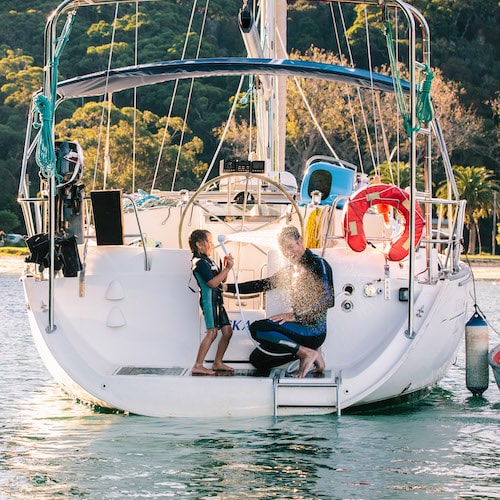
Having experienced living on a boat and cruising, both with and without a marine desalinator, I can attest that it’s a game-changing piece of gear. However, you definitely don’t need one to go cruising. There are plenty of low-tech ways to collect and make water on a boat.
Marine desalinators do offer some major benefits: there’s more water for showers, it’s easier to travel farther afield, you can spend more time in a remote location. However, these benefits have to be weighed against the drawbacks: namely a hefty price tag and ongoing maintenance.
Deciding whether a watermaker is right for you will come down to the type of cruising you’re doing, how much water you need, and your budget. Read on to learn about the pros and cons, costs, and key features of marine watermakers.
How does a watermaker work?
A watermaker on a yacht converts seawater into fresh water through a process known as reverse osmosis (RO). A high-pressure pump pushes seawater through a semi-permeable membrane that filters out salt, organics, and bacteria. The fresh water is pumped into your water tanks while the remaining brine bi-product is discharged over the side of the boat, back into the ocean.
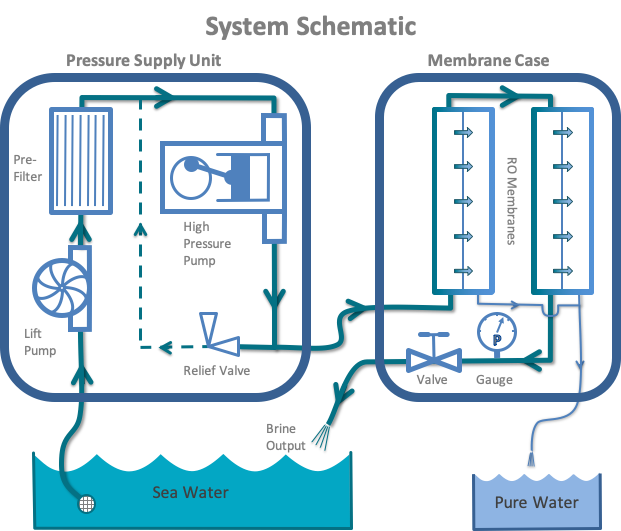
Marine watermakers: the benefits and drawbacks
Less water rationing.
When we started our 13,000 mile trip across the Pacific, we didn’t have a watermaker. We were on a tight budget and decided to prioritize other pieces of equipment like a life raft and wind vane.
As a result, we became experts in conserving water on a boat . We would carefully ration out water for washing dishes, taking showers, and even brushing our teeth!
After getting a watermaker we became far less meiserly because we knew we could always make more water if we needed to. It was a relief to not be constantly thinking about how much water we were using over the course of a day.
That being said, we couldn’t relax completely. We had to keep our tanks topped up, so as not to run the pump dry. We also always carried potable water in reserve, in case our watermaker broke in the middle of a long passage.
More luxuries
Can’t live without a proper shower? A boat water maker can make water-intensive luxuries like freshwater deck washdown, freshwater flushing heads, laundry, daily showers, and even baths, a possibility.
As great as this sounds in theory, we were surprised to find that we didn’t indulge in more showers after we got the watermaker.
We continued to use a hand pump pesticide sprayer to shower on deck despite having a watermaker and shower below. While some of this came down to habit, we also disliked running our engine (and consuming diesel) just to run the watermaker.
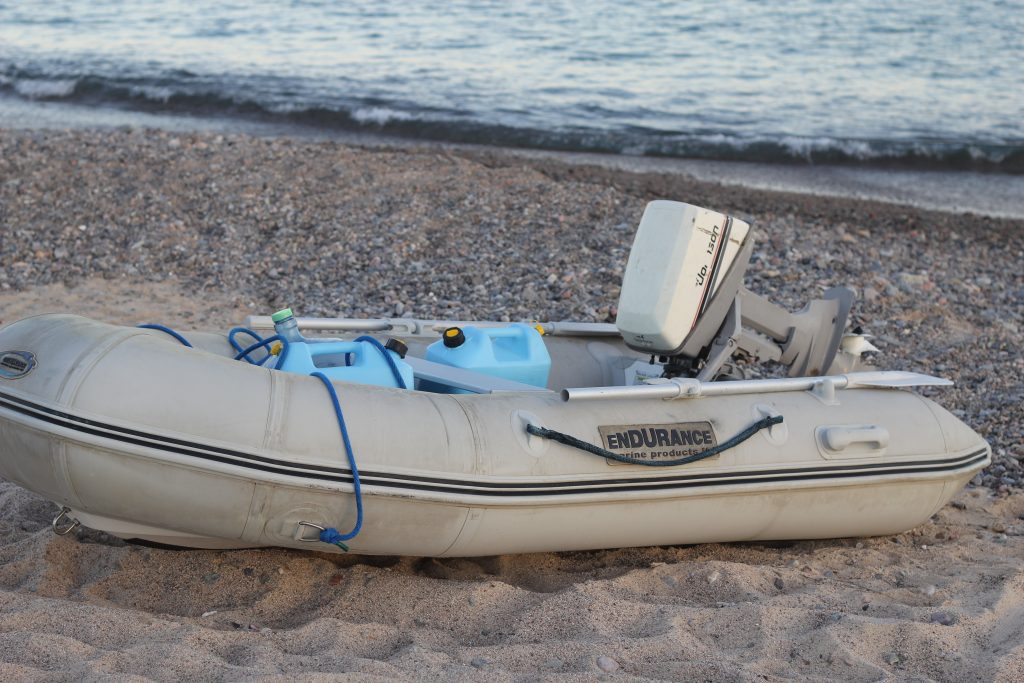
No hauling water
For us, this was by far the greatest benefit of having a watermaker!
While cruising in the US and Canada, we could refill our water tanks at a dock or marina. This was a minor hassle because it involved pulling up the anchor and docking the boat.
In Mexico, it was more challenging to get water. We would fill 5-gallon jugs at the local water purification plant in town and wheel them back to our boat on a collapsible dolly.
It often took a couple of trips with the dolly and dinghy to fill our water tanks. Oh, and we broke our dolly, twice!
We realized that if we wanted to spend more time exploring, and less time hauling water, we would have to invest in a watermaker. When we reached La Paz, Mexico we bought a refurbished watermaker, and we were so glad we did!
Our sailboat water maker gave us the gift of time, especially in places like Mexico and the South Pacific, where there were limited opportunities to fill water tanks up at the docks. It also saved us paying docking and water fees.
We estimate that our boat water maker saved us anywhere from four to six hours every week, time that we could spend exploring the wonderful places we were visiting.
A clean, safe water source
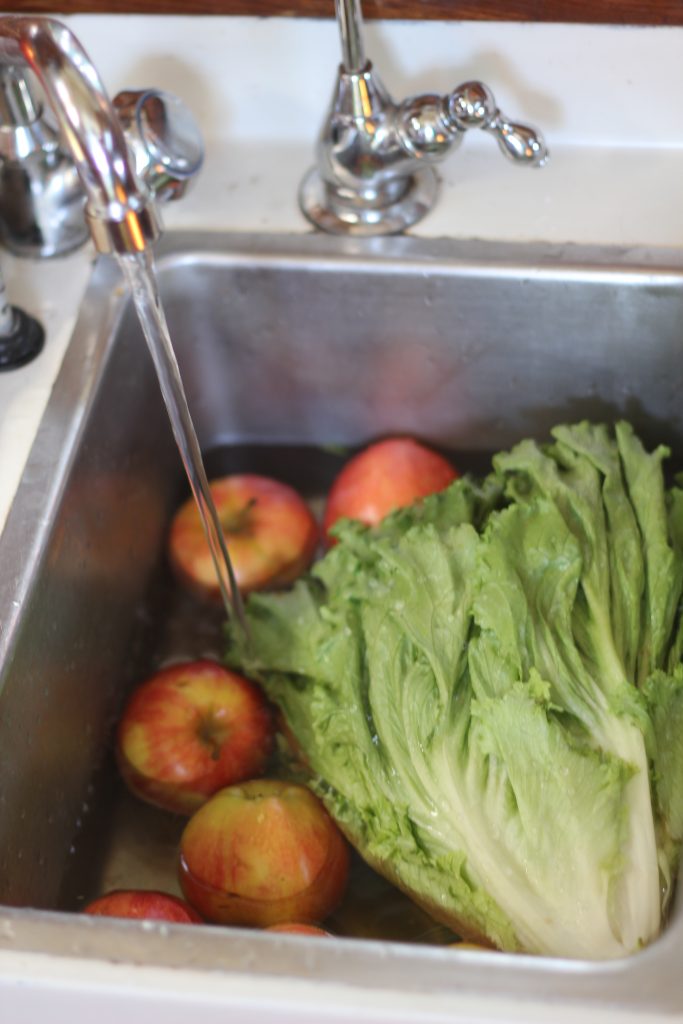
In places where the drinking water may be suspect, a boat water maker can be a reliable source of safe drinking water (assuming it’s in good working condition!).
More time in remote locations
A watermaker is a great tool if you’re drawn to remote locations where you might be the only boat in the anchorage.
It wasn’t until we reached Los Frailes, a secluded village on the Baja, that we really began to think about buying a watermaker.
There we were in an idyllic anchorage, surrounded by spectacular hiking and fishing. There was only one problem—every two days we had to walk 10 miles into town with our water jugs and hope that some kind samaritan would give us a lift back to our boat.
Before having a watermaker, we’d often leave a place we loved just because we needed to fill up our tanks. With a watermaker, we were more self-sufficient and could stay an extra few days, or as long as we wanted!
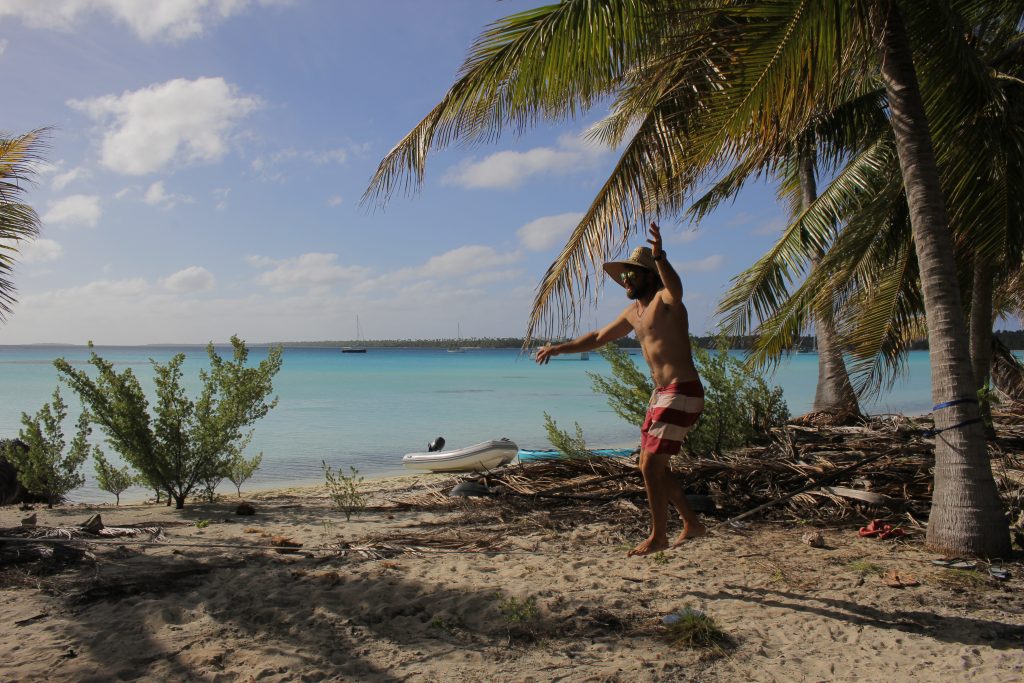
The number one drawback is the cost. We were able to find a refurbished water desalinator for $3,000, which was a great deal but also a considerable slice out of our cruising kitty.
How much does a watermaker cost?
Powered desalination systems for your average recreational cruising boat range from around 3,500 USD to 11,000 USD, with the more expensive options offering higher production (gallons of fresh water per hour).
Ongoing maintenance
Watermakers are yet another piece of boat equipment that needs to be maintained.
The majority of watermaker problems are caused by not using it enough or not using it properly.
If a watermaker is not used for a few weeks, the planktonic organisms in the seawater will die, rot, and clog the membrane and filters. This can eventually damage the reverse osmosis membrane in the watermaker.
For this reason, boat water makers should be used frequently and regularly flushed with fresh water.
Watermaker flushing
Check your manufacturer’s instructions on how to flush.
Rainman recommends flushing the seawater out of the system with fresh water if you are not using the system for more than a day or two. After another week, you need to freshwater flush the system again or pickle it for long-term storage.
Of course, it’s easy to forget, so we made it a rule to freshwater flush our watermaker after every use.
This is one good reason to choose a watermaker with an output that will meet your water consumption needs but not exceed them. If you’re using it every second day, you won’t have to try and remember whether you’ve flushed it or not.
Flushing a watermaker is relatively simple but it does involve a bit of work. We used a system with buckets of fresh water to flush our system and it generally took about 5 minutes.
You can also buy systems that automatically flush your watermaker at pre-determined times—even when you’re away from the boat (more on autoflush systems below).
Whatever you do, don’t use chlorinated water to flush as it will destroy reverse osmosis membranes. It’s possible to buy a carbon filter to remove chlorine from water sources at the dock.
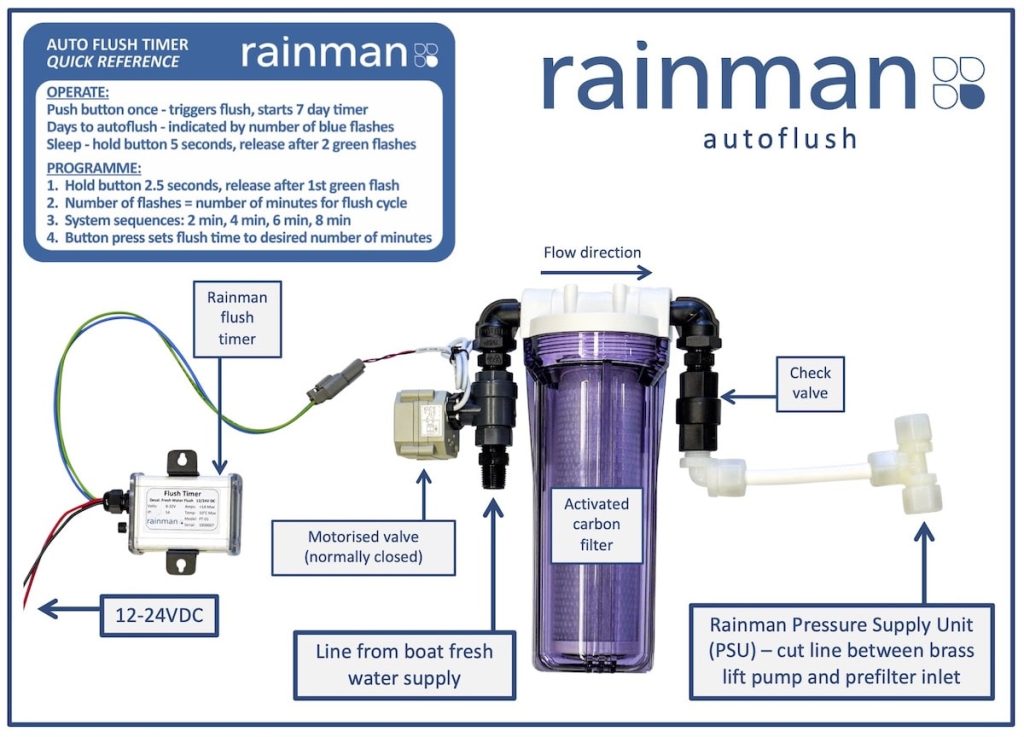
Pickling a watermaker
If you don’t plan on using your watermaker for a while it needs to be “pickled” with a special biocide to prevent growth and buildup which could render your reverse osmosis membrane totally useless.
A watermaker should also be pickled every so often to chemically cleanse the membrane.
In addition to flushing and pickling, you will also need to clean out and replace the raw water pre-filters.
Operating costs
When properly cared for, a membrane should last five to ten years. If you don’t properly flush or pickle your watermaker, it can be a lot sooner and membranes aren’t cheap, generally costing in the range of 200-700 USD.
You’ll also need to purchase pre-filters and pickling solution, which are generally quite affordable. It’s also a good idea to carry spare parts
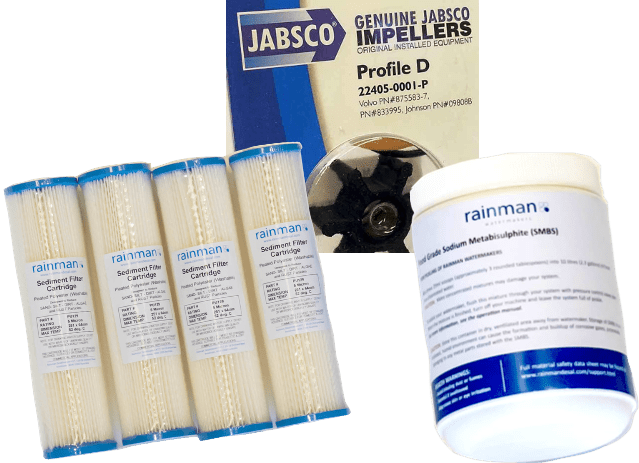
Power consumption
Watermakers can be real power hogs. When Practical Sailor tested a dozen DC watermakers they found they could draw anywhere from 12 to 48 watts per gallon, a huge range in efficiency!
According to Practical Sailor, “for maximum efficiency none of the systems drawing 15 amps or more should be operated without running the engine at the same time.”
We had to run our engine for hours to fill our tanks, which was annoying (and loud) when we were hanging out at anchor and also used up another finite resource—diesel fuel.
In our view, this was the single largest drawback to having a watermaker aboard.
Keep in mind that your power supply will determine what type of watermaker you buy. You may need to upgrade your electrical panels, get a generator or high-powered alternator, add solar panels, or increase battery capacity to supply the demand.
You can’t make water everywhere
While watermakers offer great flexibility and freedom, you can’t just make water in any old spot. If you make water in a polluted marina or anchorage, you’ll risk clogging up your filter. Most cruisers will head out to open water to ensure the saltwater they’re using is as clean as possible.
Key features to look for
Powered or handpump, handpump watermakers.
Handpump watermakers tend to be small and portable, the perfect thing to keep in your ditch bag in the event of an emergency. They’re less expensive than powered watermakers and produce far less water, usually around one gallon per hour.
Though I do know cruisers who have used a handpump watermaker for everyday use, they typically tend to be kept aboard for survival situations.
Powered watermakers
Powered watermakers run off your electrical supply or engine and can produce tens of gallons of water per hour. They tend to be a lot more expensive, but they’re productive enough to replenish your tanks.
Electric or engine drive
Powered watermakers can be electrically driven, by AC or DC, or run off the boat engine.
AC watermakers
AC models can produce in the range of 20-60 gph and are ideal for cruisers with an AC generator or alternator on board. They can also be used on boats with ample solar or wind sources and an inverter.
DC watermakers
DC watermaker systems typically produce in the range of 10-30 gph and are ideal for boats with solar power or 12V battery power.
Engine-driven watermakers
On an engine-driven watermaker, the high-pressure pump is belt-driven. These can produce a considerable amount of water, even on small engines. For instance, engine-driven units produce between 20-60gph, twice what a DC unit can produce.
Energy recovery watermaker
DC watermakers have become more efficient in recent years thanks to energy recovery systems (ERS). When the water leaves the watermaker it is still under pressure. ERS uses a set of valves to make use of this excess pressure to help drive the pump, which can reduce energy consumption by as much as 80 percent.
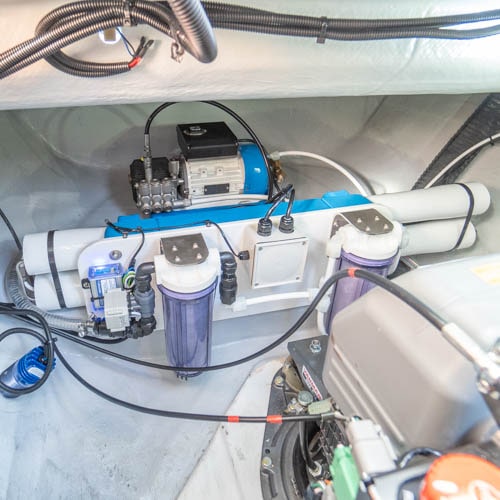
Modular, self-contained, and portable watermakers
Watermakers can be bought as modular, self-contained, and portable units. Choosing the right one may depend on your boat size and layout and whether you’re comfortable installing the watermaker yourself.
Modular units
Modular units come as several separate components that you can mount and connect yourself. This obviously offers a lot more flexibility and is particularly useful on smaller vessels where you may not have a lot of space. The downside is that these systems will take longer to install.
Self-contained units
Self-contained units arrive pre-assembled. While easier to install, they’re often bulkier and best suited to a bigger cruising sailboat with a large engine room.
Portable watermakers
Portable watermaker systems, like the Rainman watermakers, are entirely self-contained. Their compact design makes them easy to move and stow and you can completely avoid a permanent installation.
Simply put the intake and brine discharge hoses overboard, the freshwater hose in your water tank and you’ll be making water in no time.
If you race, have multiple boats, or plan on selling your boat, a portable watermaker is a great option because it can be easily moved from boat to boat.
If we were to buy another watermaker, we would probably opt for a portable one.
Automatic flushing systems
Automatic flushing systems use your boat’s freshwater supply to flush the watermaker for several minutes every few days. These systems require additional components (e.g., a timer, carbon filters, and a motorized valve) and installation but they take a lot of the maintenance out of having a watermaker onboard.
Automatic Pressure Regulation and adjustable pump speed
Your watermaker’s efficiency will be affected by the temperature and salinity of the water you’re cruising in. Cold and highly saline waters (e.g., in the high latitudes) will be more work for your watermaker, so it will take longer to purify.
Some units feature Automatic Pressure Regulation (APR) and adjustable pump speed which can help compensate for fluctuations in water temperature and salinity.
Remote control panels
Some watermakers have the option of a control panel which allows for easier access and remote control. Control panels tend to have a fairly simple interface with just a few gauges but may include a salinity sensor—so you can keep tabs on water quality—and auto-flush integration—so you can flush your watermaker with the flip of a switch.
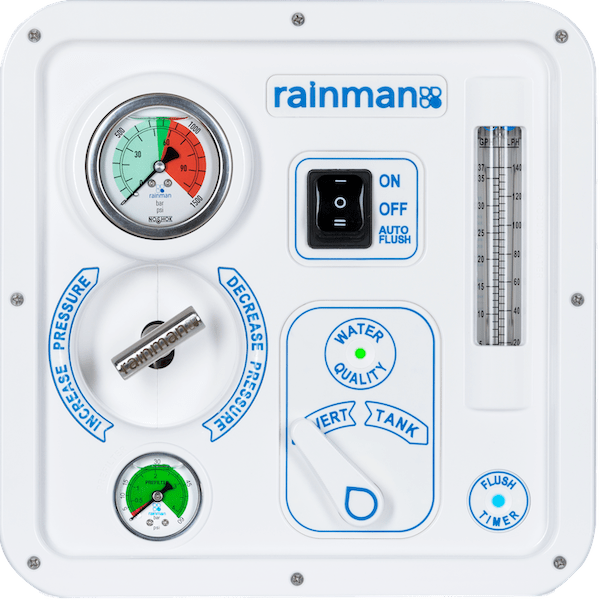
Top watermaker brands
If you’re considering buying a watermaker for a boat, here are some of the top brands to consider.
- Cruise RO Watermaker
- Echotec watermakers
- Horizon Reverse Osmosis (HRO)
- Sea Recovery watermakers
- Schenker watermakers
- Spectra watermakers
Fiona McGlynn is an award-winning boating writer who created Waterborne as a place to learn about living aboard and traveling the world by sailboat. She has written for boating magazines including BoatUS, SAIL, Cruising World, and Good Old Boat. She’s also a contributing editor at Good Old Boat and BoatUS Magazine. In 2017, Fiona and her husband completed a 3-year, 13,000-mile voyage from Vancouver to Mexico to Australia on their 35-foot sailboat.
Terms and Conditions - Privacy Policy
- THE PRINCESS PASSPORT
- Email Newsletter
- Yacht Walkthroughs
- Destinations
- Electronics
- Boating Safety
- Ultimate Boating Giveaway

- Cruising and Chartering
Freshwater Systems for Yachts
- By Dudley Dawson
- Updated: May 17, 2011
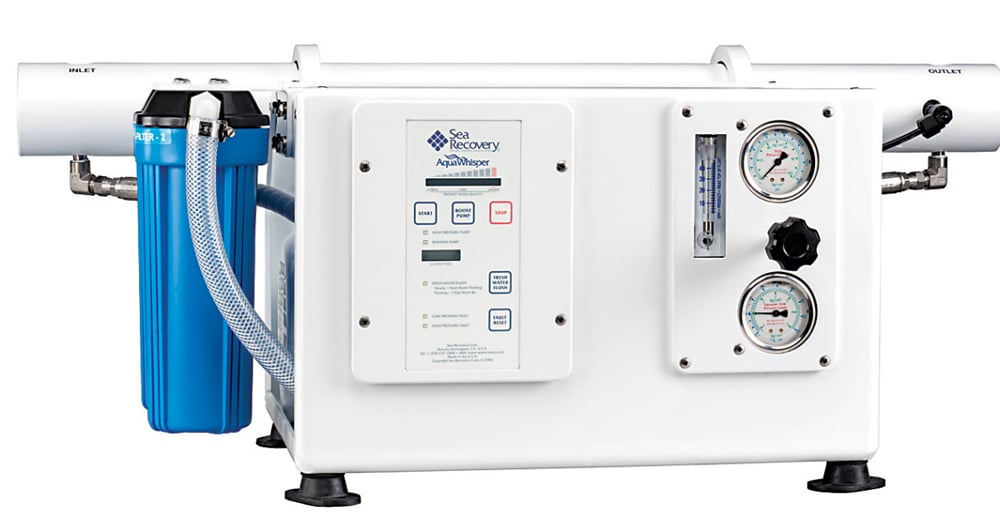
Freshwater Systems
As far as I know, neither Ben Franklin nor Rowland Howard were yachtsmen, but Howard spoke to a yachting issue when he paraphrased Franklin to observe that “you never miss the water till the well runs dry.” We, of course, have a water tank or two aboard rather than a well, but the point’s the same. We take a good, continuous supply of fresh water for granted aboard modern cruising yachts, and we sometimes don’t think much about the freshwater systems until we are forced to choose between taking a shower or cooking the pasta.
Freshwater systems are relatively straightforward and not too difficult to maintain if you understand a few basics. On small boats , a system can be as simple as a tank and a pump that comes on when a faucet is opened. Systems on most yachts, though, are a little more involved. They consist of one or more tanks, often with level monitors, feeding through a sediment filter to a pressure pump. The pump charges an accumulator (bladder) tank to maintain pressure without continuously running the pump. The pipe or hose from the accumulator then feeds to a manifold to supply cold water directly to the toilets, showers, tubs, lavatories, galley sinks and ice makers. It also feeds to a water heater, fitted with a temperature/ pressure relief valve for safety, to supply hot water to the showers, tubs and sinks. On larger yachts, there may be a connection to the washdown hoses and even to the firefighting system to avoid the damage that would result from spraying salt water inside the yacht in the event of a small fire.
The freshwater systems on yachts are potable; that is, both the water and the system’s components with which it comes into contact must meet the standards for drinking-water quality. In the United States, these are set by the Food and Drug Administration (FDA), so look for tanks, hoses and fittings made with FDA-approved materials, and always use such components when maintaining or repairing the system. This includes the tanks and components downstream, the tank fill and the vent lines, and make sure the vent lines terminate high enough to prevent them from submerging when the yacht rolls or takes a wave. If you’re careful about the water coming into the tank, the system should stay fairly clean, but ultraviolet sterilizers are available if you want to make sure you and your guests are as protected as possible.
Now, I have a bone to pick with current yacht design and construction practices. In my early years as a yacht designer, we put lots of freshwater tank capacity aboard, because only the largest yachts of the day could afford the space, expense and power needed for a steam distillation unit to produce fresh water under way. Then came reverse osmosis (RO) systems, also commonly known as watermakers, and eventually even the smallest yacht could afford one of the compact units to replenish the tanks. As a result, some new yachts have much smaller water tanks than their predecessors had. That, I think, is a mistake, and it came to light for me during an extended cruise on which we did a lot of gunkholing and anchoring. Because the tanks were too small to carry a sufficient supply, we had to run the generator to power the watermaker during periods in pristine anchorages where peace and quiet would have been preferable to the intrusive hum of the generator.
I’d opt for several tanks in ideal freshwater systems, filling only one for day trips, but filling them all for longer cruises, combined with a water maker large enough to recharge the tanks when running only a few hours a day. It’s more expensive but makes for a better cruising plan. Don’t suffer the fate of Samuel Taylor Coleridge’s ancient mariner — “Water, water, everywhere, nor any drop to drink.” Start with a good freshwater system and then maintain it to sustain your lifestyle.
Subscribe to the Yachting Life newsletter for cruising and chartering guides, new boat announcements, event updates, special offers and more!
- More: Cruising & Chartering
- More Cruising and Chartering
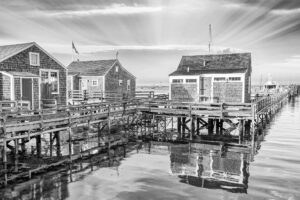
Cruising into Adventure: Discover Nantucket

Unforgettable Caribbean Voyage: Sailing Through St. Maarten and Dominica
Cruising The Exumas
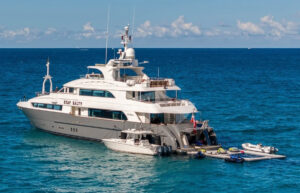

Luxury Yacht Charters: Inclusive Options Await

Next-Level Cruising: 2022 Palm Beach PB70 For Sale

Holterman Shipyard Debuts Xtreme X-65

For Sale: 2014 Sabre 42 Salon Express

- Digital Edition
- Customer Service
- Privacy Policy
- Terms of Use
- Email Newsletters
- Cruising World
- Sailing World
- Salt Water Sportsman
- Sport Fishing
- Wakeboarding
- Metric (cm, liter)
- Imperial (inch, gallon)
Freshwater Systems
Clean fresh water is life’s number one necessity, so it’s imperative to always have the best quality of water on board. The quality of the components selected for the onboard fresh water system will determine how long the stored water remains safe and potable. VETUS uses sophisticated materials to make sure the water in the tanks remains fresh for a long time.
Why choose a VETUS f resh water system?
- Our water tanks are made of synthetic material, perfect for fresh water
- Our tanks can be cleaned easily because of the large inspection cover
- The tank wall thicknesses vary from 5-8mm
- We offer complete water pressure systems with integral pump and water pressure control
- Our electrical components are available for 12 and 24VDC systems
- Our systems are quick and easy to install
- Our tanks are available in a wide range of capacities
- Our tanks completely dispense with the corrosion problems associated with metal tanks
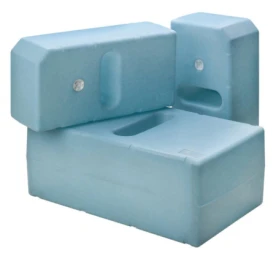
Fresh Water System
Boat water pumps and marine water systems are vital components for supplying fresh water on boats and yachts. These pumps ensure a reliable source of hot water, essential for various onboard needs, from showers to cooking. They play a crucial role in maintaining the comfort and functionality of marine vessels, providing access to hot and cold freshwater while out on the water.
| 1-2 weeks delivery time Price incl. 19% VAT | Vetus WP1208B | |
| 1-2 weeks delivery time Price incl. 19% VAT | SC42630-3512-3C | |
| 1-2 weeks delivery time Price incl. 19% VAT | SC31295-3512-3A | |
- Max 35 PSI (2,4 bar)
- Max 25 PSI (1,7 bar)
- Max 40 PSI (2,8 bar)
| 1-2 weeks delivery time Price incl. 19% VAT | SCQ301J-115S-3A | |
- Max 60 PSI (4,1 bar)
| 1-2 weeks delivery time Price incl. 19% VAT | Exalto 331052 | |
| 1-2 weeks delivery time Price incl. 19% VAT | YS00320649 | |
- 17 l/min tank 8 l
- 17 l/min tank 20 l
| 1-2 weeks delivery time Price incl. 19% VAT | YSHF1208 | |
| 1-2 weeks delivery time Price incl. 19% VAT | YSHYDRF12 | |
| 1-2 weeks delivery time Price incl. 19% VAT | Vetus EXPAT075 | |
| 1-2 weeks delivery time Price incl. 19% VAT | YS3399 | |
| 1-2 weeks delivery time Price incl. 19% VAT | YS3311 | |
| 1-2 weeks delivery time Price incl. 19% VAT | YSSC590001000 | |
- Replaceable element
| 1-2 weeks delivery time Price incl. 19% VAT | YSOSC-18.001.10 | |
| 1-2 weeks delivery time Price incl. 19% VAT | Exalto 321014 | |
| 1-2 weeks delivery time Price incl. 19% VAT | YSDWHOSE10A | |
| 1-2 weeks delivery time Price incl. 19% VAT | YSCN02156 | |
| 1-2 weeks delivery time Price incl. 19% VAT | Exalto 321323 | |
| 1-2 weeks delivery time Price incl. 19% VAT | Vetus HWHOSE13 | |
| 1-2 weeks delivery time Price incl. 19% VAT | YSWHT025 | |
| 1-2 weeks delivery time Price incl. 19% VAT | YSWHD020 | |
How does a marine fresh water pump operate in a boat's water system?
A marine fresh water pump plays a vital role in a boat's water system by pressurizing and circulating freshwater throughout the vessel. It ensures a consistent supply of clean water for various onboard applications, including sinks, showers, and appliances. This pump is an essential component of the marine water system, providing both cold and hot water when connected to a hot water heater for boat use, ensuring comfort and convenience for the yacht's occupants.
Where is a hot water heater typically installed on a boat to provide hot water?
A hot water heater for a boat is typically installed in a designated compartment or cabin, often near the galley or bathroom area, to provide hot water on demand. It is connected to the marine fresh water pump. When hot water is needed, the hot water heater uses electricity or another heat source to warm the water, which is then distributed throughout the boat's plumbing system via the marine water pumps, ensuring that hot water is readily available for various onboard applications, such as showers and sinks.
How does a marine water system differ from a regular household water system?
A marine water system differs from a regular household water system in several key ways. First, it is specifically designed to operate within the unique constraints of a boat, where space is limited, and the environment can be harsh. Marine water systems typically include specialized components like yacht water pumps and marine fresh water pumps to efficiently draw and distribute water from the boat's surroundings. Moreover, marine systems often integrate hot water heaters for boats to provide hot water on demand, catering to the needs of onboard living, but they are adapted to the vessel's size and mobility.
Yachting Monthly
- Digital edition

New best practice for filling up your water tanks and hosing down your boat
- Katy Stickland
- November 12, 2019
New guidelines have been issued on how to use water facilities safety in marinas, boatyards, sailing centres, canals and other inland waterways.

The new best practice document aims to make water use at marinas safer. Credit: RYA
For the first time, new Industry Best Practice has been issued on the safe operation of water facilities in marinas, boatyards, sailing centres, canals and other inland waterways.
The guidance has been created by both water suppliers and experts from the marine industry with the aim of having safe and practical operations in both the commercial and recreational sectors.
As well as providing guidance on the minimum level of backflow protection required in-line with effective control measures, it also offers advice on using water in a more environmentally friendly way.
The guidelines provide a consistent standard of operations, procedures and equipment for the provision and maintenance of domestic water facilities.
Recommendations include using only food grade drinking water hoses for the filling up of onboard cold water tanks, and that these hoses need to be drained and stored clear of the floor.
Marinas, boatyards and sailing centres are advised to only supply hoses for wash-down purposes. If hoses for fresh water are supplied directly by the marina, they must be signed for and the end user made aware of their correct use.
When rinsing boats, a handheld trigger gun with an auto-shut off head type is recommended. The hose and trigger gun must not be immersed in seawater when in use.
Double check valves should be used to prevent contamination of the water supply.
All pipework should be insulated to protect against sunlight and extreme temperatures, and standpipe and mains cold water supply pipes should be located away from any risk of permeation or ingress.
Water suppliers as well as industry experts from British Marine, the RYA, The Yacht Harbour Association, RNLI, and the Canal & River Trust have contributed towards the new guidelines.
The best practice document has been published by the the Industry Specialist Consulting Group which was formed to provide the recreational boating industry with practical guidance in the safe use and operation of coastal and inland water facilities.
It consists of representatives from water suppliers, together with industry experts from British Marine, the RYA, The Yacht Harbour Association, and The Canal & River Trust.
The group aims to ensure that current and future operations are safer, more efficient and give a higher and consistent safety standard across a wide range of marine operations.
READ THE BEST PRACTICE DOCUMENT HERE. FROM PAGE 14 THERE ARE SCENARIOS FOR DIFFERENT USE: Industry Best Practice Marine Water Facilities 2019
The RYA Director of Affairs, Howard Pridding said he welcomed the introduction of this Industry Best Practice, ‘which is designed to raise operational standards in the supply of domestic water for recreational boating activity, ensuring consistent practice across the inland and coastal marine industry’.
‘For our affiliated sailing clubs and recognised training centres, this new guidance will offer help and guidance on the security surrounding the safety of water supplies and how that water is used. The document advises clubs on the best practice of regular activities such as the rinsing of dinghies and filling of water tanks. Key elements of the water safety guidance include the correct labelling of water points and allocating designated areas for boat maintenance which involves the use of water,’ he stated.
Continues below…

Government consultation underway on red diesel propulsion ban
Sailors are being urged to comment on Government plans to abolish red diesel for private pleasure craft. An eight week…

Call for evidence on emissions from yachts
The Department for Transport wants to gather more evidence about emissions from all vessels operating domestically in UK waters, including…
Lesley Robinson, British Marine CEO, added: ‘We’re delighted to see the introduction of the IBP which will deliver a high level of consistency across the industry ensuring that all recreational marine activity, whether on a large or small scale, works to the same standards. Importantly, it applies to both inland and coastal operations establishing a better understanding and shared standards across the whole of Britain’s boating network.
‘The simple IBP guide makes compliance with the water regulations very clear, allowing our marinas, harbours and boatyards operating water facilities to work to the required standards, provide and share their own feedback on any problems or benefits of operations and ultimately, build new sites and update their facilities more easily.’
Anglian Water, Hyfran Duffyd, Jersey Water, Severn Trent Water and Southern Water all now accept the guidance.

- my account Sign in Register
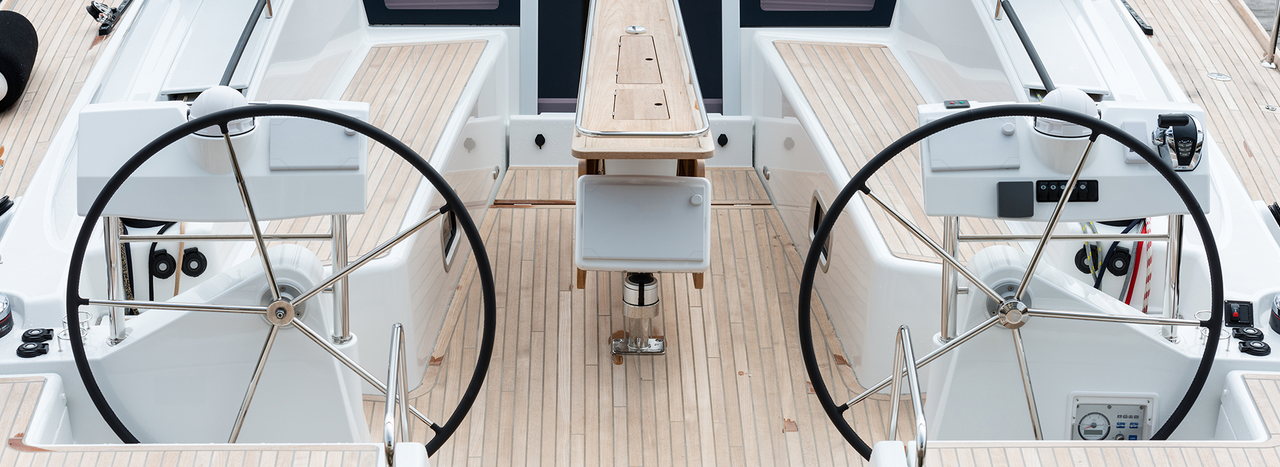
Micro-Air EasyStart Flex Home & Marine AC Soft Starter for ALL SIZES up to 72,000 BTU (6-Tons) 110V - 230V ASY-398-X1S-BL

EasyStart™ 368 Soft Starter for AC Units 43K to 72K 230V - ASY-368-X72 - Replaced by ASY-398-X1S-BL

EasyStart™ 368 Soft Starter for AC Units 19K to 42K 230V - ASY-368-X48 Blue

Danfoss Module 101N0500 / 101N0510(AC/DC)

Passport I/O Control - ASY-402-X03 / 222000245/ 9600005997

SMXir Control Display/Keypad (222000247-9600006026) - 502-09

Unity Control Board Replacement for Dometic 223100502 / 223100508 / 223100510

Vitrifrigo C115IXD4-F-1, Stainless Steel Refrigerator w/freezer compartment, Flush flange, Steelock Latch, internal unit, 12/24vdc, 115/230vac - 50/60Hz

TRIGGER - DUAL VOLTAGE - 115/230V

SMX II Display / Keypad ASY-423-X00/ 9108532972

EasyStart™ 364 Soft Starter for AC units 21K to 36K 115V/230V - ASY-364-X36-BLUE
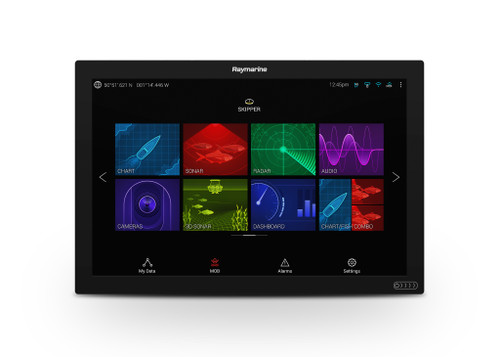
Raymarine Axiom XL 24" MFD Kit - T70430
Featured products.
Trending Now

Minn Kota Ultrex Quest 90/115 45" Shaft 24/36 Volt DSC And Micro Remote - 1368900

Vitrifrigo C115IXD4X-1, 4.2 cu.ft. Refrigerator w/freezer compartment, Stainless steel front, Adj flange, Steelock Latch, internal unit, 12/24vdc, 115/230vac - 50/60Hz OCX2

Vitrifrigo C42RXP4X-1, 1.4 cu.ft. Refrigerator only, Stainless steel front, external unit, Flush flange, Steelock latch, 12/24V, 115/230V - 50/60Hz OCX2

DUCT INSULATED FLEX 3" R-4.2 BULK25' 226600077 / 9108549909

Vitrifrigo C42RXP4-F-1, Stainless Steel, Refrigerator only, external unit, Flush flange, Steelock latch, 12/24V, 115/230V - 50/60Hz

Vitrifrigo SLIM150RSD4-EQ, Sea Classic, Refrigerator w/freezer compartment, drawer refrigerator under, external unit, Gray Front

DTG16 BTU 115V 50/60HZ DOMETIC 410A TURBO UNITS 205160174 / 9600025905

DTG16 BTU 220-240V 50/60HZ DOMETIC 410A TURBO UNITS 205162176 / 9600024566

DTG16 BTU 115V 50/60HZ DOMETIC 410A TURBO UNITS WITH SMRTSTRT 205160176 / 9600026159

DTG12 BTU 220-240V 50/60HZ DOMETIC 410A TURBO UNITS 9600024865/205162129
A little bit about us
What make us different from other marine supply stores is our hands-on experience in the boating world. We established Water Yacht Solutions in early 2006. Our main goal was and is to this date to offer you a different alternative when it comes to how you purchase the products you need to make your time in the water a breeze.
As you might have encountered before, a lot of marine supply stores sales reps do not possess hands on experience when it comes to the products they offer. We differ from most retail and online stores in our origin. We started in this market not only by selling but by installing, servicing and providing customer service for every product we carried. Furthermore, all our technicians, electricians and installers are fully certified, licensed and insured. Our experience in the field allows us to offer you an honest and educated shopping experience...
Recent Updates
If it’s worth knowing about, you’ll find it here.
The Basics of Marine Air Conditioners
Air conditioners for marine applications can be divided into 3 main categories. These categories are
Apr 19th 2021
#wateryachtsolutions

© 2024 WATER YACHT SOLUTIONS Powered by BigCommerce All rights reserved. | Sitemap

Please verify you are a human
Access to this page has been denied because we believe you are using automation tools to browse the website.
This may happen as a result of the following:
- Javascript is disabled or blocked by an extension (ad blockers for example)
- Your browser does not support cookies
Please make sure that Javascript and cookies are enabled on your browser and that you are not blocking them from loading.
Reference ID: dc8aeafd-7576-11ef-9ae6-793ed81a629b
Powered by PerimeterX , Inc.
- Places - European, Western and Northern Russia
YEKATERINBURG: FACTORIES, URAL SIGHTS, YELTSIN AND THE WHERE NICHOLAS II WAS KILLED
Sverdlovsk oblast.
Sverdlovsk Oblast is the largest region in the Urals; it lies in the foothills of mountains and contains a monument indicating the border between Europe and Asia. The region covers 194,800 square kilometers (75,200 square miles), is home to about 4.3 million people and has a population density of 22 people per square kilometer. About 83 percent of the population live in urban areas. Yekaterinburg is the capital and largest city, with 1.5 million people. For Russians, the Ural Mountains are closely associated with Pavel Bazhov's tales and known for folk crafts such as Kasli iron sculpture, Tagil painting, and copper embossing. Yekaterinburg is the birthplace of Russia’s iron and steel industry, taking advantage of the large iron deposits in the Ural mountains. The popular Silver Ring of the Urals tourist route starts here.
In the summer you can follow in the tracks of Yermak, climb relatively low Ural mountain peaks and look for boulders seemingly with human faces on them. You can head to the Gemstone Belt of the Ural mountains, which used to house emerald, amethyst and topaz mines. In the winter you can go ice fishing, ski and cross-country ski.
Sverdlovsk Oblast and Yekaterinburg are located near the center of Russia, at the crossroads between Europe and Asia and also the southern and northern parts of Russia. Winters are longer and colder than in western section of European Russia. Snowfalls can be heavy. Winter temperatures occasionally drop as low as - 40 degrees C (-40 degrees F) and the first snow usually falls in October. A heavy winter coat, long underwear and good boots are essential. Snow and ice make the sidewalks very slippery, so footwear with a good grip is important. Since the climate is very dry during the winter months, skin moisturizer plus lip balm are recommended. Be alert for mud on street surfaces when snow cover is melting (April-May). Patches of mud create slippery road conditions.
Yekaterinburg
Yekaterinburg (kilometer 1818 on the Trans-Siberian Railway) is the fourth largest city in Russia, with of 1.5 million and growth rate of about 12 percent, high for Russia. Located in the southern Ural mountains, it was founded by Peter the Great and named after his wife Catherine, it was used by the tsars as a summer retreat and is where tsar Nicholas II and his family were executed and President Boris Yeltsin lived most of his life and began his political career. The city is near the border between Europe and Asia.
Yekaterinburg (also spelled Ekaterinburg) is located on the eastern slope of the Ural Mountains in the headwaters of the Iset and Pyshma Rivers. The Iset runs through the city center. Three ponds — Verkh-Isetsky, Gorodskoy and Nizhne-Isetsky — were created on it. Yekaterinburg has traditionally been a city of mining and was once the center of the mining industry of the Urals and Siberia. Yekaterinburg remains a major center of the Russian armaments industry and is sometimes called the "Pittsburgh of Russia.". A few ornate, pastel mansions and wide boulevards are reminders of the tsarist era. The city is large enough that it has its own Metro system but is characterized mostly by blocky Soviet-era apartment buildings. The city has advanced under President Vladimir Putin and is now one of the fastest growing places in Russia, a country otherwise characterized by population declines
Yekaterinburg is technically an Asian city as it lies 32 kilometers east of the continental divide between Europe and Asia. The unofficial capital of the Urals, a key region in the Russian heartland, it is second only to Moscow in terms of industrial production and capital of Sverdlovsk oblast. Among the important industries are ferrous and non-ferrous metallurgy, machine building and metalworking, chemical and petrochemicals, construction materials and medical, light and food industries. On top of being home of numerous heavy industries and mining concerns, Yekaterinburg is also a major center for industrial research and development and power engineering as well as home to numerous institutes of higher education, technical training, and scientific research. In addition, Yekaterinburg is the largest railway junction in Russia: the Trans-Siberian Railway passes through it, the southern, northern, western and eastern routes merge in the city.
Accommodation: There are two good and affordable hotels — the 3-star Emerald and Parus hotels — located close to the city's most popular landmarks and main transport interchanges in the center of Yekaterinburg. Room prices start at RUB 1,800 per night.
History of Yekaterinburg
Yekaterinburg was founded in 1723 by Peter the Great and named after his wife Catherine I. It was used by the tsars as a summer retreat but was mainly developed as metalworking and manufacturing center to take advantage of the large deposits of iron and other minerals in the Ural mountains. It is best known to Americans as the place where the last Tsar and his family were murdered by the Bolsheviks in 1918 and near where American U-2 spy plane, piloted by Gary Powers, was shot down in 1960.
Peter the Great recognized the importance of the iron and copper-rich Urals region for Imperial Russia's industrial and military development. In November 1723, he ordered the construction of a fortress factory and an ironworks in the Iset River Valley, which required a dam for its operation. In its early years Yekaterinburg grew rich from gold and other minerals and later coal. The Yekaterinburg gold rush of 1745 created such a huge amount of wealth that one rich baron of that time hosted a wedding party that lasted a year. By the mid-18th century, metallurgical plants had sprung up across the Urals to cast cannons, swords, guns and other weapons to arm Russia’s expansionist ambitions. The Yekaterinburg mint produced most of Russia's coins. Explorations of the Trans-Baikal and Altai regions began here in the 18th century.
Iron, cast iron and copper were the main products. Even though Iron from the region went into the Eiffel Tower, the main plant in Yekaterinburg itself was shut down in 1808. The city still kept going through a mountain factory control system of the Urals. The first railway in the Urals was built here: in 1878, the Yekaterinburg-Perm railway branch connected the province's capital with the factories of the Middle Urals.
In the Soviet era the city was called Sverdlovsk (named after Yakov Sverdlov, the man who organized Nicholas II's execution). During the first five-year plans the city became industrial — old plants were reconstructed, new ones were built. The center of Yekaterinburg was formed to conform to the historical general plan of 1829 but was the layout was adjusted around plants and factories. In the Stalin era the city was a major gulag transhipment center. In World War II, many defense-related industries were moved here. It and the surrounding area were a center of the Soviet Union's military industrial complex. Soviet tanks, missiles and aircraft engines were made in the Urals. During the Cold War era, Yekaterinburg was a center of weapons-grade uranium enrichment and processing, warhead assembly and dismantlement. In 1979, 64 people died when anthrax leaked from a biological weapons facility. Yekaterinburg was a “Closed City” for 40 years during the Cold Soviet era and was not open to foreigners until 1991
In the early post-Soviet era, much like Pittsburgh in the 1970s, Yekaterinburg had a hard struggle d to cope with dramatic economic changes that have made its heavy industries uncompetitive on the world market. Huge defense plants struggled to survive and the city was notorious as an organized crime center in the 1990s, when its hometown boy Boris Yeltsin was President of Russia. By the 2000s, Yekaterinburg’s retail and service was taking off, the defense industry was reviving and it was attracting tech industries and investments related to the Urals’ natural resources. By the 2010s it was vying to host a world exhibition in 2020 (it lost, Dubai won) and it had McDonald’s, Subway, sushi restaurants, and Gucci, Chanel and Armani. There were Bentley and Ferrari dealerships but they closed down
Transportation in Yekaterinburg
Getting There: By Plane: Yekaterinburg is a three-hour flight from Moscow with prices starting at RUB 8,000, or a 3-hour flight from Saint Petersburg starting from RUB 9,422 (direct round-trip flight tickets for one adult passenger). There are also flights from Frankfurt, Istanbul, China and major cities in the former Soviet Union.
By Train: Yekaterinburg is a major stop on the Trans-Siberian Railway. Daily train service is available to Moscow and many other Russian cities.Yekaterinburg is a 32-hour train ride from Moscow (tickets RUB 8,380 and above) or a 36-hour train ride from Saint Petersburg (RUB 10,300 and above). The ticket prices are round trip for a berth in a sleeper compartment for one adult passenger). By Car: a car trip from Moscow to Yekateringburg is 1,787 kilometers long and takes about 18 hours. The road from Saint Petersburg is 2,294 kilometers and takes about 28 hours.
Regional Transport: The region's public transport includes buses and suburban electric trains. Regional trains provide transport to larger cities in the Ural region. Buses depart from Yekaterinburg’s two bus stations: the Southern Bus Station and the Northern Bus Station.
Regional Transport: According the to Association for Safe International Road Travel (ASIRT): “Public transportation is well developed. Overcrowding is common. Fares are low. Service is efficient. Buses are the main form of public transport. Tram network is extensive. Fares are reasonable; service is regular. Trams are heavily used by residents, overcrowding is common. Purchase ticket after boarding. Metro runs from city center to Uralmash, an industrial area south of the city. Metro ends near the main railway station. Fares are inexpensive.
“Traffic is congested in city center. Getting around by car can be difficult. Route taxis (minivans) provide the fastest transport. They generally run on specific routes, but do not have specific stops. Drivers stop where passengers request. Route taxis can be hailed. Travel by bus or trolleybuses may be slow in rush hour. Trams are less affected by traffic jams. Trolley buses (electric buses) cannot run when temperatures drop below freezing.”
Entertainment, Sports and Recreation in Yekaterinburg
The performing arts in Yekaterinburg are first rate. The city has an excellent symphony orchestra, opera and ballet theater, and many other performing arts venues. Tickets are inexpensive. The Yekaterinburg Opera and Ballet Theater is lavishly designed and richly decorated building in the city center of Yekaterinburg. The theater was established in 1912 and building was designed by architect Vladimir Semyonov and inspired by the Vienna Opera House and the Theater of Opera and Ballet in Odessa.
Vaynera Street is a pedestrian only shopping street in city center with restaurants, cafes and some bars. But otherwise Yekaterinburg's nightlife options are limited. There are a handful of expensive Western-style restaurants and bars, none of them that great. Nightclubs serve the city's nouveau riche clientele. Its casinos have closed down. Some of them had links with organized crime. New dance clubs have sprung up that are popular with Yekaterinburg's more affluent youth.
Yekaterinburg's most popular spectator sports are hockey, basketball, and soccer. There are stadiums and arenas that host all three that have fairly cheap tickets. There is an indoor water park and lots of parks and green spaces. The Urals have many lakes, forests and mountains are great for hiking, boating, berry and mushroom hunting, swimming and fishing. Winter sports include cross-country skiing and ice skating. Winter lasts about six months and there’s usually plenty of snow. The nearby Ural Mountains however are not very high and the downhill skiing opportunities are limited..
Sights in Yekaterinburg
Sights in Yekaterinburg include the Museum of City Architecture and Ural Industry, with an old water tower and mineral collection with emeralds. malachite, tourmaline, jasper and other precious stone; Geological Alley, a small park with labeled samples of minerals found in the Urals region; the Ural Geology Museum, which houses an extensive collection of stones, gold and gems from the Urals; a monument marking the border between Europe and Asia; a memorial for gulag victims; and a graveyard with outlandish memorials for slain mafia members.
The Military History Museum houses the remains of the U-2 spy plane shot down in 1960 and locally made tanks and rocket launchers. The fine arts museum contains paintings by some of Russia's 19th-century masters. Also worth a look are the History an Local Studies Museum; the Political History and Youth Museum; and the University and Arboretum. Old wooden houses can be seen around Zatoutstovsya ulitsa and ulitsa Belinskogo. Around the city are wooded parks, lakes and quarries used to harvest a variety of minerals. Weiner Street is the main street of Yekaterinburg. Along it are lovely sculptures and 19th century architecture. Take a walk around the unique Literary Quarter
Plotinka is a local meeting spot, where you will often find street musicians performing. Plotinka can be described as the center of the city's center. This is where Yekaterinburg holds its biggest events: festivals, seasonal fairs, regional holiday celebrations, carnivals and musical fountain shows. There are many museums and open-air exhibitions on Plotinka. Plotinka is named after an actual dam of the city pond located nearby (“plotinka” means “a small dam” in Russian).In November 1723, Peter the Great ordered the construction of an ironworks in the Iset River Valley, which required a dam for its operation. “Iset” can be translated from Finnish as “abundant with fish”. This name was given to the river by the Mansi — the Finno-Ugric people dwelling on the eastern slope of the Northern Urals.
Vysotsky and Iset are skyscrapers that are 188.3 meters and 209 meters high, respectively. Fifty-story-high Iset has been described by locals as the world’s northernmost skyscraper. Before the construction of Iset, Vysotsky was the tallest building of Yekaterinburg and Russia (excluding Moscow). A popular vote has decided to name the skyscraper after the famous Soviet songwriter, singer and actor Vladimir Vysotsky. and the building was opened on November 25, 2011. There is a lookout at the top of the building, and the Vysotsky museum on its second floor. The annual “Vysotsky climb” (1137 steps) is held there, with a prize of RUB 100,000. While Vysotsky serves as an office building, Iset, owned by the Ural Mining and Metallurgical Company, houses 225 premium residential apartments ranging from 80 to 490 square meters in size.
Boris Yeltsin Presidential Center
The Boris Yeltsin Presidential Center (in the city center: ul. Yeltsina, 3) is a non-governmental organization named after the first president of the Russian Federation. The Museum of the First President of Russia as well as his archives are located in the Center. There is also a library, educational and children's centers, and exposition halls. Yeltsin lived most of his life and began his political career in Yekaterinburg. He was born in Butka about 200 kilometers east of Yekaterinburg.
The core of the Center is the Museum. Modern multimedia technologies help animate the documents, photos from the archives, and artifacts. The Yeltsin Museum holds collections of: propaganda posters, leaflets, and photos of the first years of the Soviet regime; portraits and portrait sculptures of members of Politburo of the Central Committee of the Communist Party of various years; U.S.S.R. government bonds and other items of the Soviet era; a copy of “One Day in the Life of Ivan Denisovich” by Alexander Solzhenitsyn, published in the “Novy Mir” magazine (#11, 1962); perestroika-era editions of books by Alexander Solzhenitsyn, Vasily Grossman, and other authors; theater, concert, and cinema posters, programs, and tickets — in short, all of the artifacts of the perestroika era.
The Yeltsin Center opened in 2012. Inside you will also find an art gallery, a bookstore, a gift shop, a food court, concert stages and a theater. There are regular screenings of unique films that you will not find anywhere else. Also operating inside the center, is a scientific exploritorium for children. The center was designed by Boris Bernaskoni. Almost from the its very opening, the Yeltsin Center has been accused by members of different political entities of various ideological crimes. The museum is open Tuesday to Sunday, from 10:00am to 9:00pm.
Where Nicholas II was Executed
On July, 17, 1918, during this reign of terror of the Russian Civil War, former-tsar Nicholas II, his wife, five children (the 13-year-old Alexis, 22-year-old Olga, 19-year-old Maria and 17-year-old Anastasia)the family physician, the cook, maid, and valet were shot to death by a Red Army firing squad in the cellar of the house they were staying at in Yekaterinburg.
Ipatiev House (near Church on the Blood, Ulitsa Libknekhta) was a merchant's house where Nicholas II and his family were executed. The house was demolished in 1977, on the orders of an up and coming communist politician named Boris Yeltsin. Yeltsin later said that the destruction of the house was an "act of barbarism" and he had no choice because he had been ordered to do it by the Politburo,
The site is marked with s cross with the photos of the family members and cross bearing their names. A small wooden church was built at the site. It contains paintings of the family. For a while there were seven traditional wooden churches. Mass is given ay noon everyday in an open-air museum. The Church on the Blood — constructed to honor Nicholas II and his family — was built on the part of the site in 1991 and is now a major place of pilgrimage.
Nicholas and his family where killed during the Russian civil war. It is thought the Bolsheviks figured that Nicholas and his family gave the Whites figureheads to rally around and they were better of dead. Even though the death orders were signed Yakov Sverdlov, the assassination was personally ordered by Lenin, who wanted to get them out of sight and out of mind. Trotsky suggested a trial. Lenin nixed the idea, deciding something had to be done about the Romanovs before White troops approached Yekaterinburg. Trotsky later wrote: "The decision was not only expedient but necessary. The severity of he punishment showed everyone that we would continue to fight on mercilessly, stopping at nothing."
Ian Frazier wrote in The New Yorker: “Having read a lot about the end of Tsar Nicholas II and his family and servants, I wanted to see the place in Yekaterinburg where that event occurred. The gloomy quality of this quest depressed Sergei’s spirits, but he drove all over Yekaterinburg searching for the site nonetheless. Whenever he stopped and asked a pedestrian how to get to the house where Nicholas II was murdered, the reaction was a wince. Several people simply walked away. But eventually, after a lot of asking, Sergei found the location. It was on a low ridge near the edge of town, above railroad tracks and the Iset River. The house, known as the Ipatiev House, was no longer standing, and the basement where the actual killings happened had been filled in. I found the blankness of the place sinister and dizzying. It reminded me of an erasure done so determinedly that it had worn a hole through the page. [Source: Ian Frazier, The New Yorker, August 3, 2009, Frazier is author of “Travels in Siberia” (2010)]
“The street next to the site is called Karl Liebknecht Street. A building near where the house used to be had a large green advertisement that said, in English, “LG—Digitally Yours.” On an adjoining lot, a small chapel kept the memory of the Tsar and his family; beneath a pedestal holding an Orthodox cross, peonies and pansies grew. The inscription on the pedestal read, “We go down on our knees, Russia, at the foot of the tsarist cross.”
Books: The Romanovs: The Final Chapter by Robert K. Massie (Random House, 1995); The Fall of the Romanovs by Mark D. Steinberg and Vladimir Khrustalëv (Yale, 1995);
See Separate Article END OF NICHOLAS II factsanddetails.com
Execution of Nicholas II
According to Robert Massie K. Massie, author of Nicholas and Alexandra, Nicholas II and his family were awakened from their bedrooms around midnight and taken to the basement. They were told they were to going to take some photographs of them and were told to stand behind a row of chairs.
Suddenly, a group of 11 Russians and Latvians, each with a revolver, burst into the room with orders to kill a specific person. Yakob Yurovsky, a member of the Soviet executive committee, reportedly shouted "your relatives are continuing to attack the Soviet Union.” After firing, bullets bouncing off gemstones hidden in the corsets of Alexandra and her daughters ricocheted around the room like "a shower of hail," the soldiers said. Those that were still breathing were killed with point black shots to the head.
The three sisters and the maid survived the first round thanks to their gems. They were pressed up against a wall and killed with a second round of bullets. The maid was the only one that survived. She was pursued by the executioners who stabbed her more than 30 times with their bayonets. The still writhing body of Alexis was made still by a kick to the head and two bullets in the ear delivered by Yurovsky himself.
Yurovsky wrote: "When the party entered I told the Romanovs that in view of the fact their relatives continued their offensive against Soviet Russia, the Executive Committee of the Urals Soviet had decided to shoot them. Nicholas turned his back to the detachment and faced his family. Then, as if collecting himself, he turned around, asking, 'What? What?'"
"[I] ordered the detachment to prepare. Its members had been previously instructed whom to shoot and to am directly at the heart to avoid much blood and to end more quickly. Nicholas said no more. he turned again to his family. The others shouted some incoherent exclamations. All this lasted a few seconds. Then commenced the shooting, which went on for two or three minutes. [I] killed Nicholas on the spot."
Nicholas II’s Initial Burial Site in Yekaterinburg
Ganina Yama Monastery (near the village of Koptyaki, 15 kilometers northwest of Yekaterinburg) stands near the three-meter-deep pit where some the remains of Nicholas II and his family were initially buried. The second burial site — where most of the remains were — is in a field known as Porosyonkov (56.9113628°N 60.4954326°E), seven kilometers from Ganina Yama.
On visiting Ganina Yama Monastery, one person posted in Trip Advisor: “We visited this set of churches in a pretty park with Konstantin from Ekaterinburg Guide Centre. He really brought it to life with his extensive knowledge of the history of the events surrounding their terrible end. The story is so moving so unless you speak Russian, it is best to come here with a guide or else you will have no idea of what is what.”
In 1991, the acid-burned remains of Nicholas II and his family were exhumed from a shallow roadside mass grave in a swampy area 12 miles northwest of Yekaterinburg. The remains had been found in 1979 by geologist and amateur archeologist Alexander Avdonin, who kept the location secret out of fear that they would be destroyed by Soviet authorities. The location was disclosed to a magazine by one his fellow discovers.
The original plan was to throw the Romanovs down a mine shaft and disposes of their remains with acid. They were thrown in a mine with some grenades but the mine didn't collapse. They were then carried by horse cart. The vats of acid fell off and broke. When the carriage carrying the bodies broke down it was decided the bury the bodies then and there. The remaining acid was poured on the bones, but most of it was soaked up the ground and the bones largely survived.
After this their pulses were then checked, their faces were crushed to make them unrecognizable and the bodies were wrapped in bed sheets loaded onto a truck. The "whole procedure," Yurovsky said took 20 minutes. One soldiers later bragged than he could "die in peace because he had squeezed the Empress's -------."
The bodies were taken to a forest and stripped, burned with acid and gasoline, and thrown into abandoned mine shafts and buried under railroad ties near a country road near the village of Koptyaki. "The bodies were put in the hole," Yurovsky wrote, "and the faces and all the bodies, generally doused with sulfuric acid, both so they couldn't be recognized and prevent a stink from them rotting...We scattered it with branches and lime, put boards on top and drove over it several times—no traces of the hole remained.
Shortly afterwards, the government in Moscow announced that Nicholas II had been shot because of "a counterrevolutionary conspiracy." There was no immediate word on the other members of the family which gave rise to rumors that other members of the family had escaped. Yekaterinburg was renamed Sverdlov in honor of the man who signed the death orders.
For seven years the remains of Nicholas II, Alexandra, three of their daughters and four servants were stored in polyethylene bags on shelves in the old criminal morgue in Yekaterunburg. On July 17, 1998, Nicholas II and his family and servants who were murdered with him were buried Peter and Paul Fortress in St. Petersburg along with the other Romanov tsars, who have been buried there starting with Peter the Great. Nicholas II had a side chapel built for himself at the fortress in 1913 but was buried in a new crypt.
Near Yekaterinburg
Factory-Museum of Iron and Steel Metallurgy (in Niznhy Tagil 80 kilometers north of Yekaterinburg) a museum with old mining equipment made at the site of huge abandoned iron and steel factory. Officially known as the Factory-Museum of the History of the Development of Iron and Steel Metallurgy, it covers an area of 30 hectares and contains a factory founded by the Demidov family in 1725 that specialized mainly in the production of high-quality cast iron and steel. Later, the foundry was renamed after Valerian Kuybyshev, a prominent figure of the Communist Party.
The first Russian factory museum, the unusual museum demonstrates all stages of metallurgy and metal working. There is even a blast furnace and an open-hearth furnace. The display of factory equipment includes bridge crane from 1892) and rolling stock equipment from the 19th-20th centuries. In Niznhy Tagil contains some huge blocks of malachite and
Nizhnyaya Sinyachikha (180 kilometers east-northeast of Yekaterinburg) has an open air architecture museum with log buildings, a stone church and other pre-revolutionary architecture. The village is the creation of Ivan Samoilov, a local activist who loved his village so much he dedicated 40 years of his life to recreating it as the open-air museum of wooden architecture.
The stone Savior Church, a good example of Siberian baroque architecture. The interior and exterior of the church are exhibition spaces of design. The houses are very colorful. In tsarist times, rich villagers hired serfs to paint the walls of their wooden izbas (houses) bright colors. Old neglected buildings from the 17th to 19th centuries have been brought to Nizhnyaya Sinyachikha from all over the Urals. You will see the interior design of the houses and hear stories about traditions and customs of the Ural farmers.
Verkhoturye (330 kilometers road from Yekaterinburg) is the home a 400-year-old monastery that served as 16th century capital of the Urals. Verkhoturye is a small town on the Tura River knows as the Jerusalem of the Urals for its many holy places, churches and monasteries. The town's main landmark is its Kremlin — the smallest in Russia. Pilgrims visit the St. Nicholas Monastery to see the remains of St. Simeon of Verkhoturye, the patron saint of fishermen.
Ural Mountains
Ural Mountains are the traditional dividing line between Europe and Asia and have been a crossroads of Russian history. Stretching from Kazakhstan to the fringes of the Arctic Kara Sea, the Urals lie almost exactly along the 60 degree meridian of longitude and extend for about 2,000 kilometers (1,300 miles) from north to south and varies in width from about 50 kilometers (30 miles) in the north and 160 kilometers (100 miles) the south. At kilometers 1777 on the Trans-Siberian Railway there is white obelisk with "Europe" carved in Russian on one side and "Asia" carved on the other.
The eastern side of the Urals contains a lot of granite and igneous rock. The western side is primarily sandstone and limestones. A number of precious stones can be found in the southern part of the Urals, including emeralds. malachite, tourmaline, jasper and aquamarines. The highest peaks are in the north. Mount Narodnaya is the highest of all but is only 1884 meters (6,184 feet) high. The northern Urals are covered in thick forests and home to relatively few people.
Like the Appalachian Mountains in the eastern United States, the Urals are very old mountains — with rocks and sediments that are hundreds of millions years old — that were one much taller than they are now and have been steadily eroded down over millions of years by weather and other natural processes to their current size. According to Encyclopedia Britannica: “The rock composition helps shape the topography: the high ranges and low, broad-topped ridges consist of quartzites, schists, and gabbro, all weather-resistant. Buttes are frequent, and there are north–south troughs of limestone, nearly all containing river valleys. Karst topography is highly developed on the western slopes of the Urals, with many caves, basins, and underground streams. The eastern slopes, on the other hand, have fewer karst formations; instead, rocky outliers rise above the flattened surfaces. Broad foothills, reduced to peneplain, adjoin the Central and Southern Urals on the east.
“The Urals date from the structural upheavals of the Hercynian orogeny (about 250 million years ago). About 280 million years ago there arose a high mountainous region, which was eroded to a peneplain. Alpine folding resulted in new mountains, the most marked upheaval being that of the Nether-Polar Urals...The western slope of the Urals is composed of middle Paleozoic sedimentary rocks (sandstones and limestones) that are about 350 million years old. In many places it descends in terraces to the Cis-Ural depression (west of the Urals), to which much of the eroded matter was carried during the late Paleozoic (about 300 million years ago). Found there are widespread karst (a starkly eroded limestone region) and gypsum, with large caverns and subterranean streams. On the eastern slope, volcanic layers alternate with sedimentary strata, all dating from middle Paleozoic times.”
Southern Urals
The southern Urals are characterized by grassy slopes and fertile valleys. The middle Urals are a rolling platform that barely rises above 300 meters (1,000 feet). This region is rich in minerals and has been heavily industrialized. This is where you can find Yekaterinburg (formally Sverdlovsk), the largest city in the Urals.
Most of the Southern Urals are is covered with forests, with 50 percent of that pine-woods, 44 percent birch woods, and the rest are deciduous aspen and alder forests. In the north, typical taiga forests are the norm. There are patches of herbal-poaceous steppes, northem sphagnous marshes and bushy steppes, light birch forests and shady riparian forests, tall-grass mountainous meadows, lowland ling marshes and stony placers with lichen stains. In some places there are no large areas of homogeneous forests, rather they are forests with numerous glades and meadows of different size.
In the Ilmensky Mountains Reserve in the Southern Urals, scientists counted 927 vascular plants (50 relicts, 23 endemic species), about 140 moss species, 483 algae species and 566 mushroom species. Among the species included into the Red Book of Russia are feather grass, downy-leaved feather grass, Zalessky feather grass, moccasin flower, ladies'-slipper, neottianthe cucullata, Baltic orchis, fen orchis, helmeted orchis, dark-winged orchis, Gelma sandwart, Krasheninnikov sandwart, Clare astragalus.
The fauna of the vertebrate animals in the Reserve includes 19 fish, 5 amphibian and 5 reptile. Among the 48 mammal species are elks, roe deer, boars, foxes, wolves, lynxes, badgers, common weasels, least weasels, forest ferrets, Siberian striped weasel, common marten, American mink. Squirrels, beavers, muskrats, hares, dibblers, moles, hedgehogs, voles are quite common, as well as chiropterans: pond bat, water bat, Brandt's bat, whiskered bat, northern bat, long-eared bat, parti-coloured bat, Nathusius' pipistrelle. The 174 bird bird species include white-tailed eagles, honey hawks, boreal owls, gnome owls, hawk owls, tawny owls, common scoters, cuckoos, wookcocks, common grouses, wood grouses, hazel grouses, common partridges, shrikes, goldenmountain thrushes, black- throated loons and others.
Activities and Places in the Ural Mountains
The Urals possess beautiful natural scenery that can be accessed from Yekaterinburg with a rent-a-car, hired taxi and tour. Travel agencies arrange rafting, kayaking and hiking trips. Hikes are available in the taiga forest and the Urals. Trips often include walks through the taiga to small lakes and hikes into the mountains and excursions to collect mushrooms and berries and climb in underground caves. Mellow rafting is offered in a relatively calm six kilometer section of the River Serga. In the winter visitor can enjoy cross-mountains skiing, downhill skiing, ice fishing, dog sledding, snow-shoeing and winter hiking through the forest to a cave covered with ice crystals.
Lake Shartash (10 kilometers from Yekaterinburg) is where the first Ural gold was found, setting in motion the Yekaterinburg gold rush of 1745, which created so much wealth one rich baron of that time hosted a wedding party that lasted a year. The area around Shartash Lake is a favorite picnic and barbecue spot of the locals. Getting There: by bus route No. 50, 054 or 54, with a transfer to suburban commuter bus route No. 112, 120 or 121 (the whole trip takes about an hour), or by car (10 kilometers drive from the city center, 40 minutes).
Revun Rapids (90 kilometers road from Yekaterinburg near Beklenishcheva village) is a popular white water rafting places On the nearby cliffs you can see the remains of a mysterious petroglyph from the Paleolithic period. Along the steep banks, you may notice the dark entrance of Smolinskaya Cave. There are legends of a sorceress who lived in there. The rocks at the riverside are suited for competitive rock climbers and beginners. Climbing hooks and rings are hammered into rocks. The most fun rafting is generally in May and June.
Olenii Ruchii National Park (100 kilometers west of Yekaterinburg) is the most popular nature park in Sverdlovsk Oblast and popular weekend getaway for Yekaterinburg residents. Visitors are attracted by the beautiful forests, the crystal clear Serga River and picturesque rocks caves. There are some easy hiking routes: the six-kilometer Lesser Ring and the 15-kilometer Greater Ring. Another route extends for 18 km and passes by the Mitkinsky Mine, which operated in the 18th-19th centuries. It's a kind of an open-air museum — you can still view mining an enrichment equipment here. There is also a genuine beaver dam nearby.
Among the other attractions at Olenii Ruchii are Druzhba (Friendship) Cave, with passages that extend for about 500 meters; Dyrovaty Kamen (Holed Stone), created over time by water of Serga River eroding rock; and Utoplennik (Drowned Man), where you can see “The Angel of Sole Hope”., created by the Swedish artist Lehna Edwall, who has placed seven angels figures in different parts of the world to “embrace the planet, protecting it from fear, despair, and disasters.”
Image Sources: Wikimedia Commons
Text Sources: Federal Agency for Tourism of the Russian Federation (official Russia tourism website russiatourism.ru ), Russian government websites, UNESCO, Wikipedia, Lonely Planet guides, New York Times, Washington Post, Los Angeles Times, National Geographic, The New Yorker, Bloomberg, Reuters, Associated Press, AFP, Yomiuri Shimbun and various books and other publications.
Updated in September 2020
- Google+
Page Top
This site contains copyrighted material the use of which has not always been authorized by the copyright owner. Such material is made available in an effort to advance understanding of country or topic discussed in the article. This constitutes 'fair use' of any such copyrighted material as provided for in section 107 of the US Copyright Law. In accordance with Title 17 U.S.C. Section 107, the material on this site is distributed without profit. If you wish to use copyrighted material from this site for purposes of your own that go beyond 'fair use', you must obtain permission from the copyright owner. If you are the copyright owner and would like this content removed from factsanddetails.com, please contact me.

IMAGES
VIDEO
COMMENTS
Higher capacity pumps will have port sizes of 3/4" or 1" to allow more flow. Some shower pumps offer multiple port sizes between 3/4" and 1 1/2". Otherwise 1/2" NPT ports are very common on freshwater pumps. West Marine Freshwater System Pump is designed to meet the needs of most boats with a water heater, shower and up to three faucets.
8. Yacht Water Makers. Yacht water makers are designed to cater to larger water demands on luxury yachts, providing a steady supply of freshwater for all onboard needs. These sophisticated systems often come with advanced features, such as touch-screen controls and automatic operation, enhancing user convenience.
Watermaker running costs. An ERD unit will typically produce 20-60 litres per hour. The lower demand on the pump means it can be reasonably powered by 12V with as little as 9A, and can produce a litre of water with just 4-5Wh of energy. High-pressure units need between two and three times that energy per litre.
The Best in Technology. Hydrus Laboratory SAS is currently undergoing ISO/IEC 17025:2017 certification and provides trained personnel to take water samples under ISO 19458. The results from our analysis are accepted by port authorities and can be used to help obtain a ships' certificate of sanitation. All results are accompanied with a full ...
A watermaker on a yacht converts seawater into fresh water through a process known as reverse osmosis (RO). A high-pressure pump pushes seawater through a semi-permeable membrane that filters out salt, organics, and bacteria. The fresh water is pumped into your water tanks while the remaining brine bi-product is discharged over the side of the ...
Basic 30 (8-Gallon) Stainless Steel Water Heater, 115V/750W. Slim 20 (5.3-Gallon) Stainless Steel Water Heater, 115V/750W. 6 Gallon Front/Rear Mount Water Heater with Heat Exchanger, 120V. CONTACT WEST MARINE. Live Chat. Store Locator. Shop the best selection of Freshwater Systems from West Marine. Visit for products, prices, deals and more!
Marine Water Makers at Fisheries Supply We understand the importance of having access to fresh, potable water during your marine adventures. Whether you're sailing the open seas or anchored in a tranquil bay, our premium marine water makers ensure you always have a freshwater supply. Our broad offerings, featuring the latest in reverse osmosis ...
The alternative method is a Clark pump watermaker, also known as an energy recovery device (ERD). This uses a fast-running but much lower-pressure pump which needs less power. To obtain the high pressure required, the pressure in the discharge water is harnessed by a couple of reciprocating pistons and used to boost the inlet pressure.
Explore the role of water quality in yachting with our expert guide. Learn about ISO standards, yacht water systems, and our specialised services in water testing and treatment for safe and efficient yachting. ... a risk-based approach designed to ensure the safety of the water supply, plays a pivotal role in this regard. The use of the fresh ...
It also feeds to a water heater, fitted with a temperature/ pressure relief valve for safety, to supply hot water to the showers, tubs and sinks. On larger yachts, there may be a connection to the washdown hoses and even to the firefighting system to avoid the damage that would result from spraying salt water inside the yacht in the event of a ...
The marine industry has seen a recent surge in interest for trawlers and long-range live-aboard boats and yachts. ... a long-range, off-grid, on-the-water lifestyle would be increasingly appealing. However it's important to consider the most sustainable options when outfitting your boat for the long haul - and having an ample supply of ...
Let us help. 206-632-4462. Shop water tanks at Fisheries Supply. Explore our boat fresh water tanks, including flexible tanks. Shop for water tanks monitors, senders, treatments, & more.
Our tanks can be cleaned easily because of the large inspection cover. We offer complete water pressure systems with integral pump and water pressure control. Our electrical components are available for 12 and 24VDC systems. Our tanks are available in a wide range of capacities. Our tanks completely dispense with the corrosion problems ...
After all, the water supply system on the yacht is a very important topic. Articles Jabsco 30573-0003 and 23240-2000. SKU: YS3399 € 68,31 Volume, liters: 0.6; 1; 8; Jabsco 46400 Fresh Water Pump Inlet Strainer. Jabsco 46400 Fresh Water Pump Inlet Strainer. 1-2 weeks delivery time Price incl. 19% VAT ...
Let us help. 206-632-4462. Shop Fisheries Supply's marine plumbing fittings. From hose connections to boat water systems, find marine hose & brass fittings for all your vessel's needs.
Recommendations include using only food grade drinking water hoses for the filling up of onboard cold water tanks, and that these hoses need to be drained and stored clear of the floor. Marinas, boatyards and sailing centres are advised to only supply hoses for wash-down purposes. If hoses for fresh water are supplied directly by the marina ...
What make us different from other marine supply stores is our hands-on experience in the boating world. We established Water Yacht Solutions in early 2006. Our main goal was and is to this date to offer you a different alternative when it comes to how you purchase the products you need to make your time in the water a breeze. ... Water Yacht ...
Reauthorization of Reclamation Rural Water Supply Act of 2006. (a) Authorization of appropriations .—Section 109(a) of the Reclamation Rural Water Supply Act of 2006 ( 43 U.S.C. 2408(a) ) is amended by striking "2016" and inserting "2032".
The about 100m long and 20m high rock wall is impressive. It is a phenomenon, which can be found also in other places... 4. Vaynera Street, Yekaterinburg. 351. Points of Interest & Landmarks. By olegl28. Vainera street is very nice place in Ekaterinburg. Now it is only walking street with many stores for wonderful...
Fisheries Supply provides marine hoses and related products for both recreational and commercial vessels. Their main purpose is to equip boats with the necessary plumbing systems, including marine fuel lines, marine exhaust hoses, marine water hoses, bilge pump hoses, and hose clamps. Our marine hoses come in various materials, such as PVC ...
From washdown pumps to marine A/C pumps, West Marine has you covered. You'll find fresh water pumps, air conditioner pumps and washdown pumps. We carry bilge pumps and macerator pumps, plus toilet pumps and even bait tank pumps for bait wells and livewells. West Marine stocks general purpose pumps and pump switches, pump cleaners and more.
Weir on river Iset. The weir on the Iset river was the beginning of Yekaterinburg. It was built in 1723 by the orders of Vasily Tatishchev (see the nearby monument to him and his successor Georg de Gennin) to provide power to the iron works established here. Today the low dam, which separates the city pond from the historical square, is a ...
Set sail on your destination's top-rated boat tours and cruises. Whether it's an entertaining and informative boat tour or a relaxing sunset dinner cruise, these are the best Yekaterinburg cruises around. Looking for something more adventurous? Check out our list of must-do water activities in Yekaterinburg. See reviews and photos of boat tours & water sports in Yekaterinburg on Tripadvisor.
There is an indoor water park and lots of parks and green spaces. The Urals have many lakes, forests and mountains are great for hiking, boating, berry and mushroom hunting, swimming and fishing. Winter sports include cross-country skiing and ice skating. Winter lasts about six months and there's usually plenty of snow.